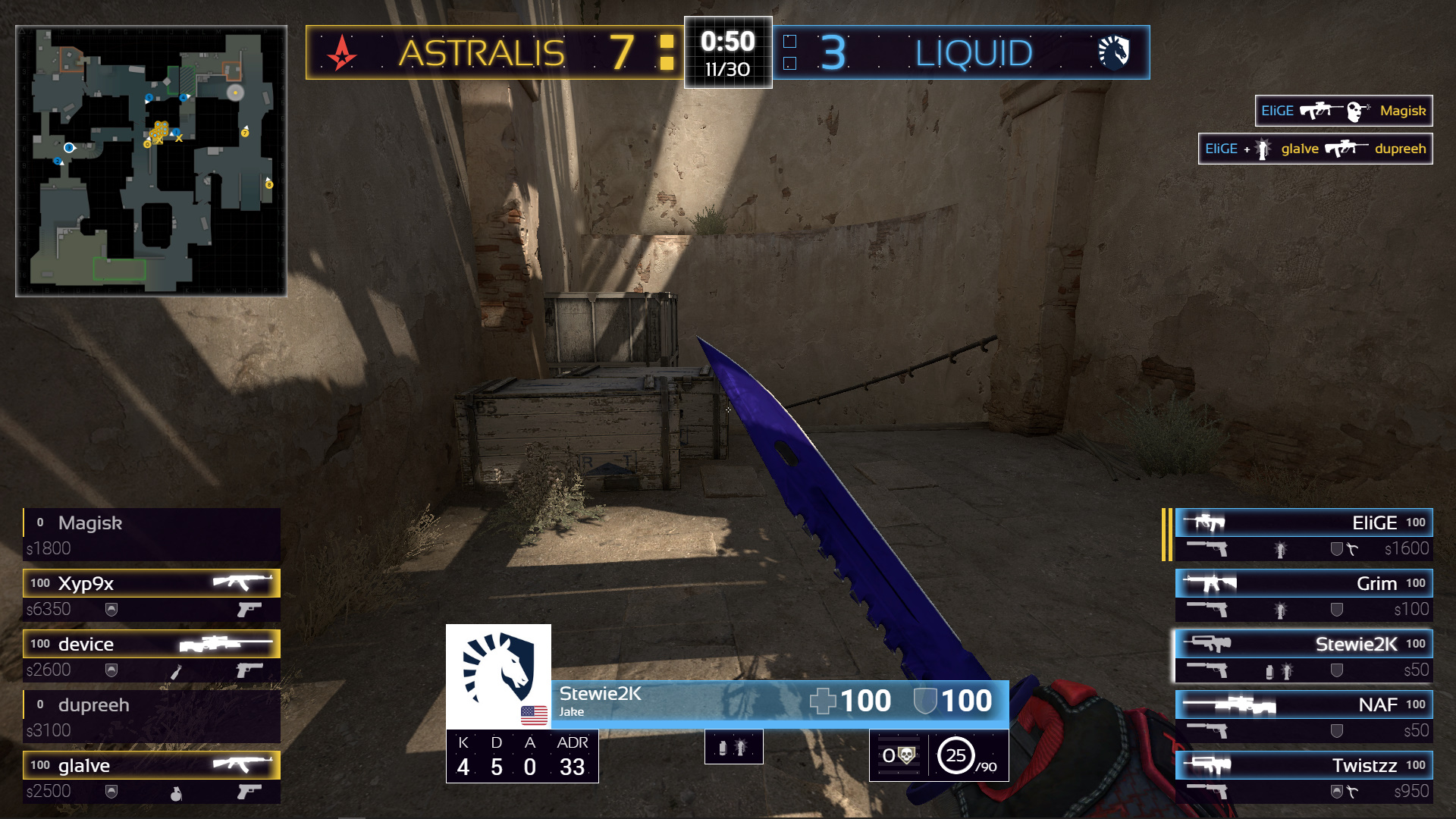Clubwho CSGO Layouts
 Custom CSGO HUD/Layouts that I designed.
Custom CSGO HUD/Layouts that I designed.
Before using
This bundle is not intended to be used verbatim. I am open-sourcing this bundle in hopes that people will use it as a learning tool and base to build from, rather than just taking and using it wholesale in their own productions.
To reiterate, please don't just download and use this bundle as-is. Build something new from it.
You can build a HUD using any framework and any paradigm you want. I just use this because I was learning it and not everything in it is perfect.
Getting Started
These instructions will get you a copy of the project up and running on your local machine for development and testing purposes. See deployment for notes on how to deploy the project on a live system.
Prerequisites
For killfeed and player firing indicators on the mini map:
- HLAE I recommed understanding what this program does if you haven't used it before
Installing
A GitHub action is planned to be made. Currently you have to manually build
-
Clone the repo into the NodeCG bundles folder
cd nodecg/bundles git clone https://github.com/EwanLyon/clubwho-csgo-graphics.git -
Install NPM packages
npm install
-
Run build
npm run build
-
Start NodeCG
npm run start
or
cd ../.. node .
-
(Optional) If running HLAE type into the CSGO console
mirv_pgl events whitelist add "player_death" mirv_pgl events whitelist add "other_death" mirv_pgl events whitelist add "weapon_fire" mirv_pgl url "ws://localhost:31337/mirv" mirv_pgl start
Roadmap
Currently a lot of code cleanup needs to occur. Expect changes to occur rapidly and break bundles using this.
See the open issues for a list of proposed features (and known issues).
Built With
Contributing
Contributions are what make the open source community such an amazing place to be learn, inspire, and create. Any contributions you make are greatly appreciated.
- Fork the Project
- Create your Feature Branch (
git checkout -b feature/AmazingFeature) - Commit your Changes (
git commit -m 'Add some AmazingFeature') - Push to the Branch (
git push origin feature/AmazingFeature) - Open a Pull Request
License
This project is licensed under the MIT License - see the LICENSE file for details